index


 |
HARDWARE TOOLS |
 |

 MY DESK
MY DESK
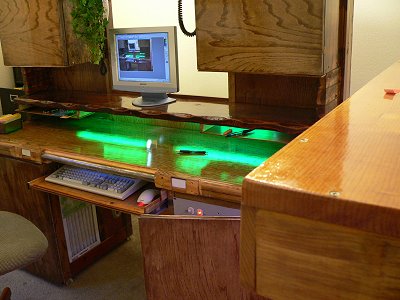 This
is not an ordinary desk...
This
is not an ordinary desk...
I built this desk for remote control.
 The desk can hold four computers, which are held in the two bottom cabinets.
The bottom right cabinet is partly open. Each
cabinet holds standard 19 inch rack mount devices.
Top right are all the audio gear.
The desk can hold four computers, which are held in the two bottom cabinets.
The bottom right cabinet is partly open. Each
cabinet holds standard 19 inch rack mount devices.
Top right are all the audio gear.
 Top left are PIC related devices - The real bussiness end of the desk.
Top left are PIC related devices - The real bussiness end of the desk.
 Each side has air filters at the bottom with air being sucked out at the top.
Only the right side is operational at this
time. Filtering only works when all front and the back doors are shut.
My first desk only filtered room air; This desk directly filters air to the electronics.
It still, indirectly, filters room air, but
directly filters and cools the electronics; the main purpose.
I run 220vac muffin fans on 120vac; speed slows, but keeps the fan noise down.
Got to have "quiet"; my nerves are shot.
Each side has air filters at the bottom with air being sucked out at the top.
Only the right side is operational at this
time. Filtering only works when all front and the back doors are shut.
My first desk only filtered room air; This desk directly filters air to the electronics.
It still, indirectly, filters room air, but
directly filters and cools the electronics; the main purpose.
I run 220vac muffin fans on 120vac; speed slows, but keeps the fan noise down.
Got to have "quiet"; my nerves are shot.

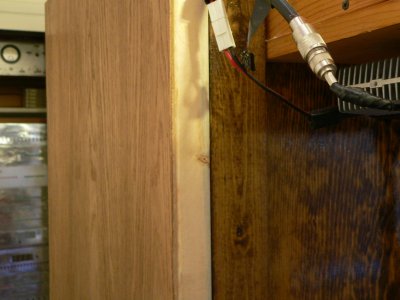 Back door is closed.
Back door is closed.
 Sence the desk is on castors, the desk can neatly be pushed directly against the wall.
This saves a lot of room space, as well as keeping dust out of the electronics.
Sence the desk is on castors, the desk can neatly be pushed directly against the wall.
This saves a lot of room space, as well as keeping dust out of the electronics.

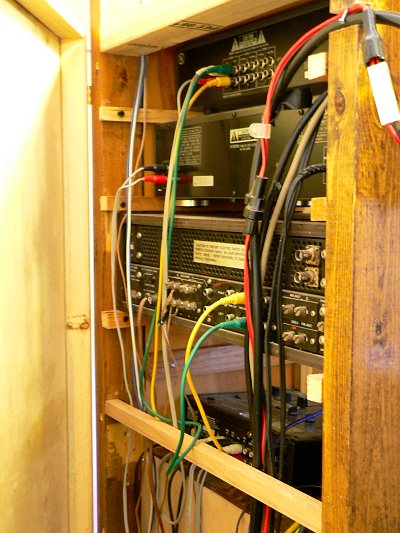 All of these messy wires disappear when the back door is closed.
All of these messy wires disappear when the back door is closed.
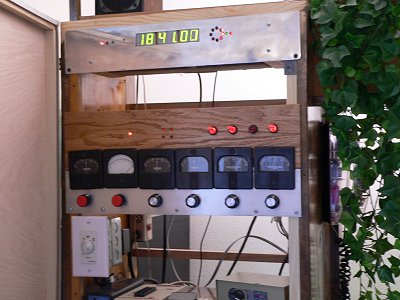
 Left side: The programmer cabinet
Left side: The programmer cabinet
 Another simulator
Another simulator
This simulator can only simulate parameters to one device at a time. There are four input switches at the top. These can simulate digital (on or off) conditions. Several meters below can simulate
analog values. This information is then applied to a board to simulate real world conditions at a site. A simulator saves wear and tear on real equipment: not to mention real damage.
The forte of my second system is for the devices to communicate among themselves. A single simulator cannot duplicate this function. Over the years, I have had a hard time with this fact. I have
used temporary alligator clips and resistors, resembling a rat's nest. What I really need are several simulators.

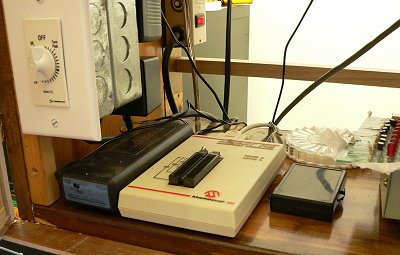 On the right is a timer to erase EPROM's and PIC chips.
On the right is a timer to erase EPROM's and PIC chips.
The eraser sits below the timer. It is a small thing, but erases four chips at once. I only paid about $20. I think it is mercury vapor.
A microchip programmer is to the right of the eraser. A spring-loaded socket can accommodate several sizes of chips. I got this very cheap, at one of their many seminars. You usually get lunch
too.
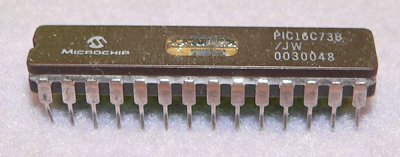 But my favorite is the PIC16C73B. I have several devices that use the PIC16C63 and PICC16C62 also.
But my favorite is the PIC16C73B. I have several devices that use the PIC16C63 and PICC16C62 also.

 PRINTER DESK
PRINTER DESK
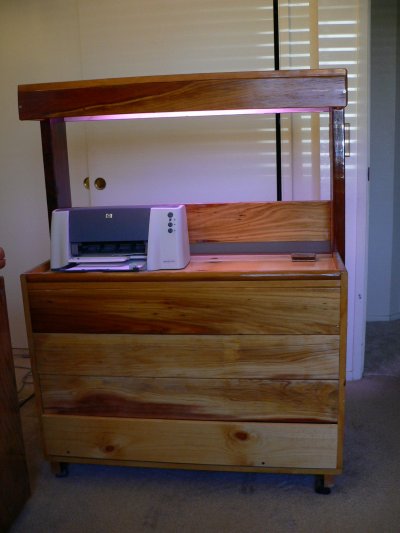 I built this printer stand about 10 years ago, in 1995. I used to run two printers. The front is
mostly RedWood. The stand comes to life when I turn on a computer.
I built this printer stand about 10 years ago, in 1995. I used to run two printers. The front is
mostly RedWood. The stand comes to life when I turn on a computer.
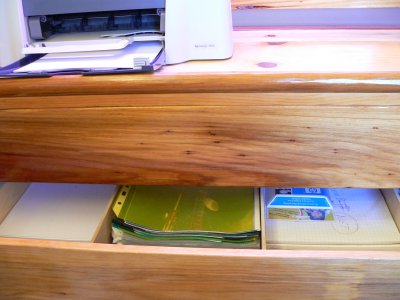 The next two drawers down contain assorted paper and plastic inserts.
The next two drawers down contain assorted paper and plastic inserts.

 FULL SITE SIMULATOR
FULL SITE SIMULATOR
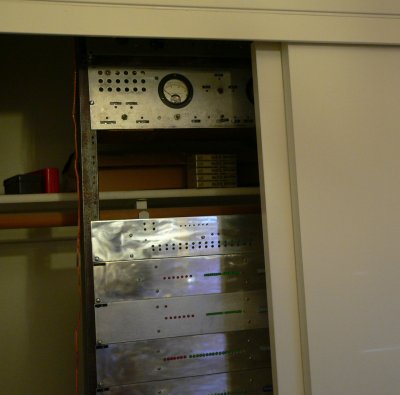
 One of my simulators is in my closet. I have not used this simulator in many years:
a testimount to how well the first remote control system has been performing. (But then again, I have not been making changes to it.)
One of my simulators is in my closet. I have not used this simulator in many years:
a testimount to how well the first remote control system has been performing. (But then again, I have not been making changes to it.)

Autonomous Systems
![]()
![]() MY DESK
MY DESK![]() PRINTER DESK
PRINTER DESK![]() FULL SITE SIMULATOR
FULL SITE SIMULATOR